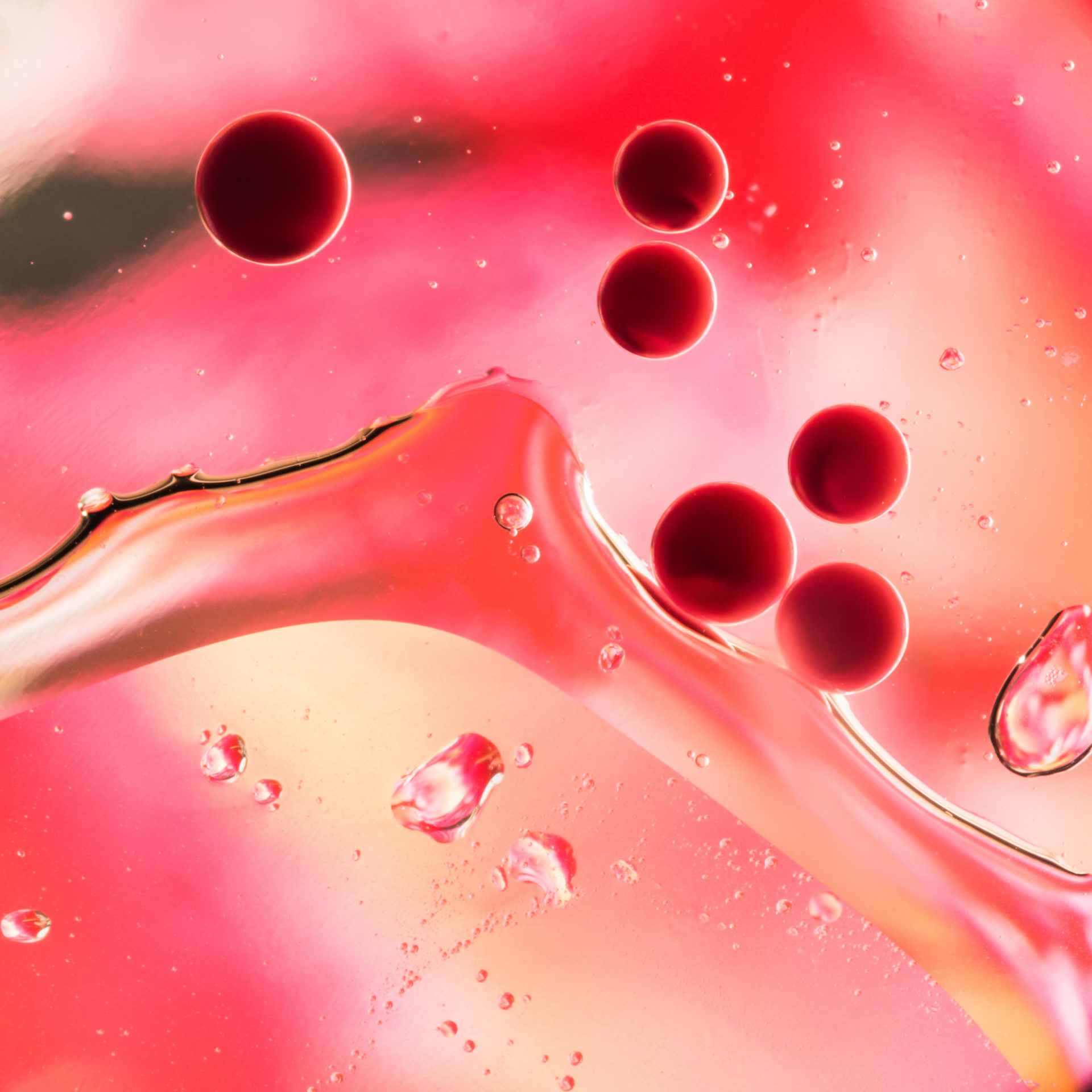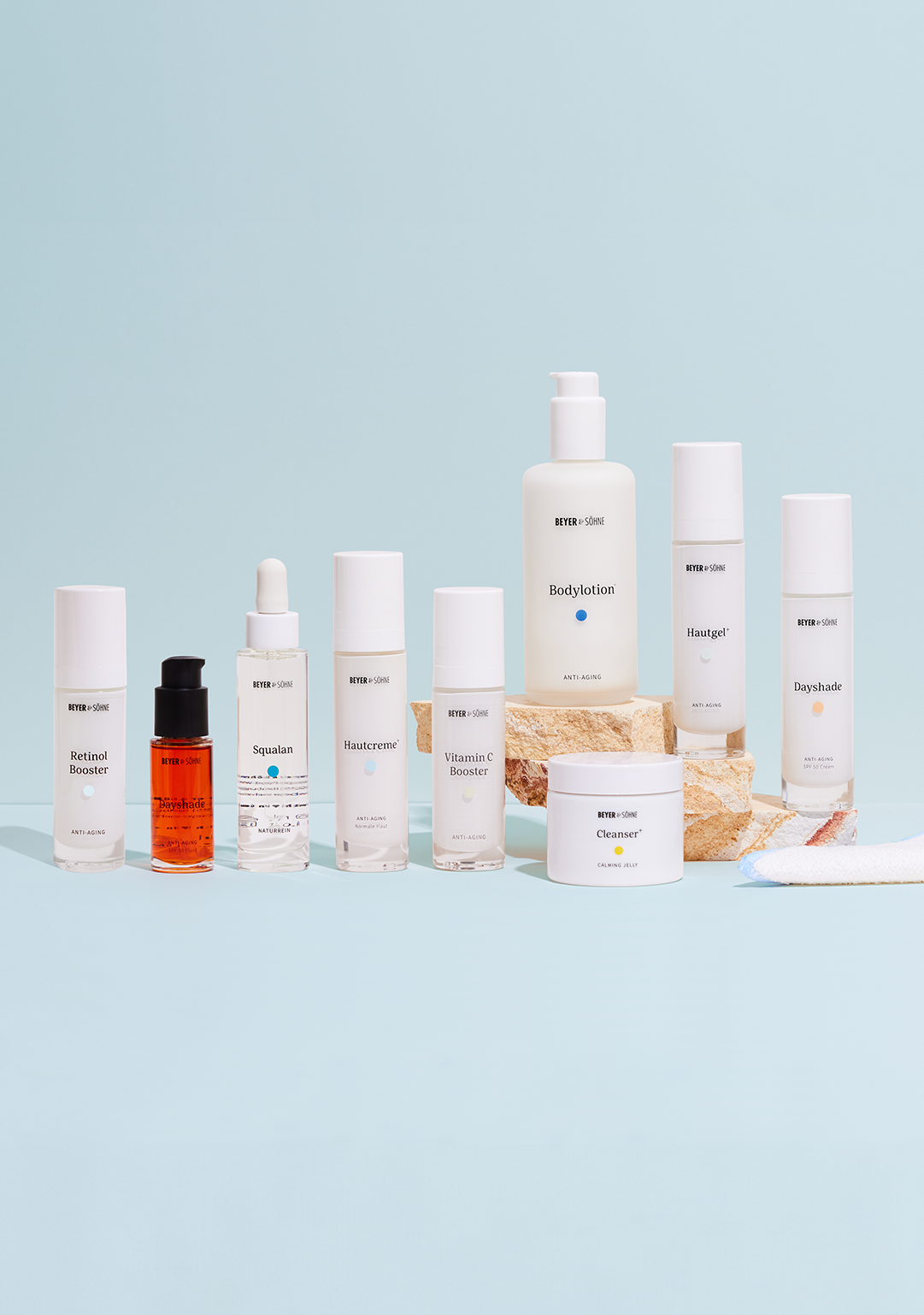The Red Power Antioxidant
Beautiful Skin Through Astaxanthin?
Our skin needs protection to stay healthy and beautiful for a long time. Antioxidants are particularly effective in providing this support. One of the most potent among these is astaxanthin. This natural substance, which gives salmon its red color, also protects against the sun and is dubbed “the strongest antioxidant in the world.” This article will explore how astaxanthin works in the skin.

Robby Beyer
September 2024

Table of Contents
What Is Astaxanthin?
Astaxanthin From the Blood Rain Algae
How Does Astaxanthin Work in the Skin?
Would You Like to Learn More About Anti-aging?
Effect on Wrinkles: Astaxanthin and Collagen
Astaxanthin: Natural UV Protection
Dayshade: Our Product With Astaxanthin and High Spf
Astaxanthin as a Dietary Supplement
Conclusion
What Is Astaxanthin?
Astaxanthin is a natural red pigment that chemically belongs to the carotenoids. Carotenoids are mainly found in red fruits and vegetables. They are a broad class of naturally occurring substances with numerous functions. They protect plants from UV radiation, act as antioxidants, and are essential for the normal physiological processes of cells.
Well-known carotenoids include lycopene (found in tomatoes), carotene (in carrots), and lutein (in green leafy vegetables). All these substances are healthy for humans. However, astaxanthin's effects on the skin are unmatched. In this article, you will learn why astaxanthin, in particular, can help your skin naturally glow.
Astaxanthin From the Blood Rain Algae
Natural and vegan: The Blood Rain Algae (
haematococcus pluvialis
) is known for its high astaxanthin content. Most astaxanthin capsules, therefore, contain the powder of this algae. It is the reason for the coloring of salmon and flamingos, which absorb this red substance through the food chain. In cosmetics, the algae Haematococcus Pluvialis is also listed on the INCI list. If the astaxanthin content is particularly high, the list of ingredients will additionally show
astaxanthin
.
How Does Astaxanthin Work in the Skin?
First and foremost, astaxanthin is one of the most potent antioxidants. Thus, it neutralizes free radicals that arise from stress, excessive UV exposure, and even the "normal" processes within the body. Free radicals are primarily responsible for skin aging, which is why effective anti-aging cosmetics must contain antioxidants.
However, astaxanthin is not just an "ordinary" antioxidant. Due to its molecular structure, it is highly fat-soluble (lipophilic). This makes it particularly suitable for inclusion in rich creams or oil-based serums. Since the skin has a high lipid content, astaxanthin penetrates effortlessly and can unleash its numerous effects within the skin.
Its particularly strong antioxidant effect is due to its unique structure. Astaxanthin contains both hydrophilic (water-loving) and lipophilic (fat-loving) components in its structure. This allows it to more effectively protect the skin’s bilayer, which also contains water- and fat-loving parts, than most other antioxidants. Moreover, astaxanthin is more efficient in its antioxidant action and, simply put, is not as easily "used up." These features alone make astaxanthin a true anti-aging powerhouse. But there's more.
Would You Like to Learn More About Anti-aging?
Here you can read about what anti-aging means and how a cream can help against skin aging.
Effect on Wrinkles: Astaxanthin and Collagen
Collagen is the most common protein in our body. It forms a kind of scaffold that supports the skin. As we age, this scaffold becomes brittle and breaks, leading to wrinkles. Collagen is, therefore, the foundation of smooth and wrinkle-free skin.
Astaxanthin works in two ways against wrinkles. Firstly, it protects the collagen in the skin from damage by free radicals. Secondly, it inhibits enzymes that break down collagen, which are activated under stress. Thus, astaxanthin stimulates the skin's own collagen synthesis, ensuring a smooth complexion and firm skin over the long term.
By the way: There are other substances that boost our collagen synthesis, including vitamins A and C. Vitamin A stimulates collagen synthesis, while Vitamin C additionally offers high protection against free radicals.
We introduce more antioxidants and active ingredients against wrinkles in this article.
Astaxanthin: Natural UV Protection
Due to its high antioxidant effect, astaxanthin serves as a natural sun protectant. It reduces the negative effects of excessive UV radiation and combats inflammation. While astaxanthin cannot replace conventional UV filters, it can enhance the effectiveness of sun protection products. Most importantly, it helps your skin stay healthier through the summer and thus appear younger.
Moreover, the anti-inflammatory properties of astaxanthin are why it also aids in relieving sunburn. Due to its long-lasting effects, sun protection products containing astaxanthin continue to work even after sunbathing. In particularly fair skin types, a red tint can be observed if the product contains a high amount of astaxanthin.
Additionally, astaxanthin appears effective in combating age spots, a phenomenon dermatologists refer to as
hyperpigmentation
. This condition is due to excessive melanin production under sun exposure. Melanin is the substance responsible for brown spots on the skin. Less melanin means a more even and clearer complexion.
Dayshade: Our Product With Astaxanthin and High Spf
The facts speak for themselves. That's why we use astaxanthin in our sun protection fluid with SPF 50, and in our anti-aging day care with SPF 50.
Astaxanthin as a Dietary Supplement
So far, we've primarily focused on the external effects of astaxanthin. However, when ingested, astaxanthin also appears to have numerous positive effects within the body. Studies not only confirm its efficacy against wrinkles and inflammation but also suggest it as a potential therapy for dementia, hair loss, and other degenerative diseases.
For the skin, though, astaxanthin is most effective when applied topically. Astaxanthin as a dietary supplement is not harmful to health, and no side effects are known.
Conclusion
Powerful antioxidant, anti-inflammatory, and skin complexion enhancer: Astaxanthin really does a lot! Its naturalness is fascinating, being a vegan substance that occurs in nature. In cosmetics, the algae Haematococcus pluvialis causes an intense red coloring. Its use is especially recommended in sun protection products and oils.
In our Dayshade, astaxanthin, along with modern organic-chemical UV filters, provides an SPF of 56. This allows you to enjoy the sun without compromise.
By the way, our Hautcreme+ with anti-aging effects contains a range of synergistically acting antioxidants, such as vitamins C, A, and E. A noticeable all-around effect can be achieved by combining Dayshade with our Hautcreme+.
Sources
Die Welt –
Tee und Pillen wirken besser als Sonnenschutz
Studie zu Astaxanthin in der Haut –
Astaxanthin in Skin Health, Repair, and Disease: A Comprehensive Review
Studie zu Kosmetik mit Astaxanthin –
Cosmetic benefits of astaxanthin on humans subjects.
Studie zu Astaxanthin und UV-Schutz –
Protective effects of topical application of a poorly soluble antioxidant astaxanthin liposomal formulation on ultraviolet-induced skin damage.
